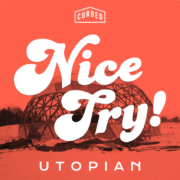Design Podcasts to Add to Your Queue
-
Category
Innovation -
Posted By
Schmidt Associates -
Posted On
Sep 17, 2020
By Cassidy O’Hara | Cassidy is an architecture student at Ball State University, completing an internship with Schmidt Associates.
As a self-described lifetime learner, I love trying new things, teaching myself new skills (most recently rollerblading and sewing), and learning about anything and everything. Yet as a full-time architecture student, I don’t always have the time to cross things off my reading list.
One educational resource I recently discovered is the podcast. Podcasts are episode-based radio shows you can download to your device or stream online. There is a podcast for nearly every topic, from news to true crime to design.
In a time of working from home, digital meetings, and virtual lunch and learns, podcasts are a great way to kick back (or multi-task), stay sharp, and learn something new. Here’s a list of some of my favorite design-related podcast series and episodes:
99% Invisible


Topic(s): Architecture, design, infrastructure, cities, sounds, technology, history
Average Episode Length: 20-40 minutes
New Episodes: Weekly
Listen: Apple Podcasts | Spotify
Originally a collaboration of KALW public radio and the American Institute of Architects in San Francisco, 99% Invisible is for those who love compelling stories about minutiae. One of my favorite episodes, The Smell of Concrete After Rain, discusses Brutalism, Boston City Hall, and a reading from late architect Michael Sorkin’s “Two Hundred and Fifty Things an Architect Should Know.”
Another favorite episode, Structural Integrity, sheds light on the story of how one graduate engineering student discovered a disastrous design flaw hiding in plain sight that held the ability to topple the Manhattan skyline in an instant. To amend the issue, a team of engineers collaborated with the NYPD to execute a covert operation designed to fortify the Citigroup Center skyscraper, and for a long time, the public was left in the dark.
Prop Town: The Fake Rooftop Suburb that Hid a Whole WWII Airplane Factory delves into the disguise of wartime operations through the use of Hollywood set design techniques, Tying Architecture Together: How Metal Star Bolts Bolster Old Brick Buildings investigates structural preservation techniques of historic brownstones through ornament, and Ghost Boxes: Reusing Abandoned Big-Box Superstores Across America raises the possibility of the creative reuse of megastructure skeletons in a way that maximizes utilization of existing site specific infrastructure.
Nice Try!


Topic(s): Lessons learned from failed utopias
Average Episode Length: 40-50 minutes
New Episodes: Periodically
Listen: Apple Podcasts | Spotify
Nice Try! “explores stories of people who tried to design a better world — and what happens when those designs don’t go according to plan.” It includes episodes about a racially integrated mid-century suburb, a self-sufficient closed ecosystem in the Arizona desert, and Disney World.
Utopia in Our Backyard asks the question, “Can the suburbs be a utopia for all?” Suburban developments built in the 1950s and 1960s offered first-time homebuyers a chance at the American Dream, but this dream typically excluded Black homebuyers by design. This episode explains racial covenants and quotas, White flight, and the Fair Housing Act of 1968 through a comparison of Levittown and its lesser known, racially integrated cousin Concord Park.
The Theater of Utopia investigates Biosphere 2, a Buckminster Fuller-inspired geometric steel and glass building situated in the Arizona desert, designed to replicate the ecosystems of Earth. The episode follows the stories of the eight researchers who locked themselves inside and the drama and controversy surrounding the experiment.
Radiolab


Topic(s): Various topics
Average Episode Length: 30-60 minutes
New Episodes: Weekly
Listen: Apple Podcasts
Described as “an investigation told through sounds and stories,” Radiolab explores new topics every week. It is a production of WNYC, a public radio station in New York City, and episodes are available as podcasts.
One of my favorite recent episodes is Invisible Allies, about the science of the pandemic-fighting power of the sun and copper’s unique elemental ability to stave off infection. The episode considers the use of copper in commercial building applications to reduce instances of Legionnaires, MRSA, and now COVID-19.
Inspired by Cold War era planners, the episode Atomic Artifacts considers what national treasures we might preserve today in the event of a nuclear attack. The list might surprise you!




